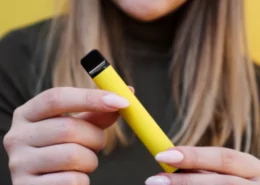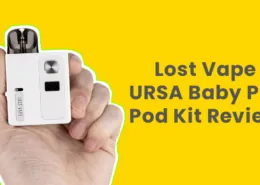Flavored Vapes Reduce Smoking in High-Risk Adults
Study Finds Fruity and Sweet Vape Flavors Effective in Cutting Cigarette Use
A new study led by Stephen T. Higgins, PhD, from the University of Vermont, has found that e-cigarettes in preferred flavors, particularly fruity and sweet, when used in combination with very low nicotine content (VLNC) cigarettes, significantly reduce smoking behaviors in adults at the highest risk for smoking-related harm. The research, published online on September 6, 2024, in JAMA Network Open, focused on individuals with psychiatric conditions or lower education levels.
Researchers Conduct Three Randomized Clinical Trials
The study involved three randomized clinical trials conducted over 16 weeks at three sites in the United States between 2020 and 2023. Researchers assessed the smoking behaviors of 326 high-risk adults (mean age, 40.09 years; 74.5% women) who smoked at least five cigarettes a day and had no plans to quit within the next 30 days. Participants were randomly assigned to one of four groups:
- Control group using normal nicotine content (NNC) cigarettes (n = 67)
- VLNC cigarettes with 0.4 mg nicotine (n = 66)
- VLNC cigarettes plus tobacco-flavored e-cigarettes with 5% nicotine by weight (n = 57)
- VLNC cigarettes plus e-cigarettes with flavors like cucumber or mango and 5% nicotine by weight (n = 70)
Flavored E-Cigarettes Plus VLNC Cigarettes Show Significant Reduction in Smoking
The study found that participants using VLNC cigarettes plus preferred flavor e-cigarettes smoked significantly fewer cigarettes per day than those using NNC cigarettes (adjusted mean difference [AMD], −14.91; 95% CI, −18.49 to −11.33; P < .001). The decrease in cigarettes per day was greater for participants using VLNC cigarettes plus preferred flavor e-cigarettes than those using VLNC cigarettes alone (AMD, −6.70; P < .001) or VLNC cigarettes plus tobacco-flavored e-cigarettes (AMD, −4.13; P = .02).
Mango (24.9%), fruit medley (19.6%), and classic menthol (12.2%) were the three most frequently preferred flavors among participants. Additionally, levels of the tobacco-specific carcinogen total 4-(methylnitrosamino)-1-(3-pyridyl)-1-butanol were significantly lower in the VLNC cigarettes plus preferred flavor e-cigarettes group compared to the other three groups.
Balancing Adult Access and Youth Prevention in a Well-Regulated Marketplace
The authors suggest that a well-regulated marketplace with strong enforcement could allow adult access to flavored e-cigarettes while preventing youth access. They emphasize the importance of continuing to explore this possibility, as it may enhance the overall effect of a nicotine product standard on cigarette smoking, should the US Food and Drug Administration (FDA) move forward with such a policy.
Study Limitations and Disclosures
The study had a smaller sample size than planned due to the COVID-19 pandemic and a 20% dropout rate, which may have introduced bias. The study duration was limited to 16 weeks, so the long-term effects of exposure were not explored. The research was supported by grants from the Tobacco Centers of Regulatory Science, the Centers of Biomedical Research Excellence, and other sources. The National Institute on Drug Abuse provided study cigarettes, while e-cigarettes were purchased from JUUL Labs. Some authors reported receiving research grants from various organizations, but no other conflicts of interest were reported.
- Is Vaping While Driving Illegal in New Mexico? - June 28, 2025
- Vaping Laws in New Mexico: Guide of Age, Flavors, Tax & Rules - June 28, 2025
- Vaping Laws in New Hampshire: A Comprehensive Guide for You - June 27, 2025








